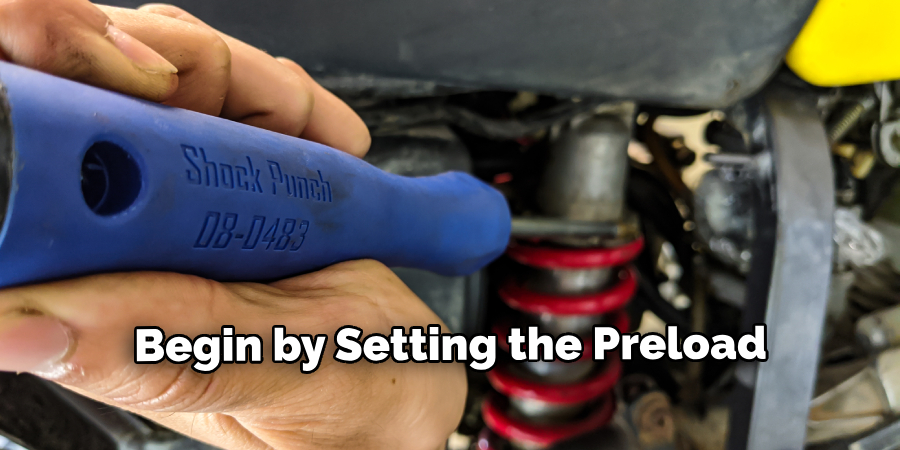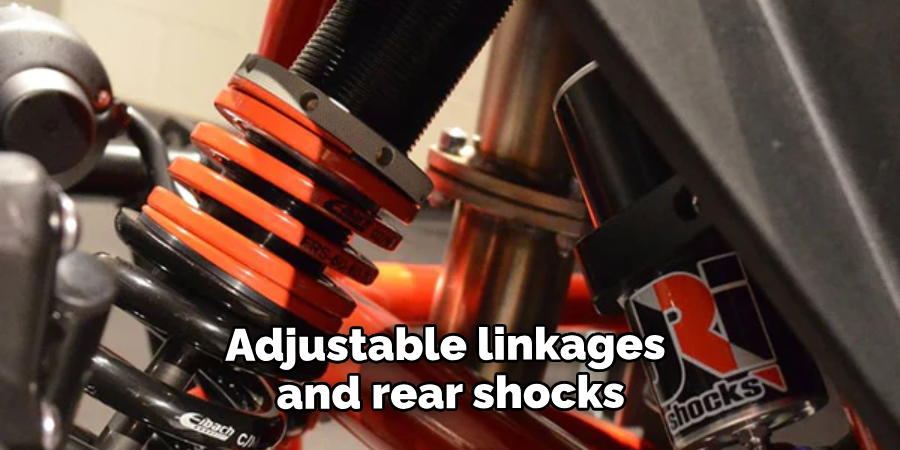To set sag on a dirt bike, adjust the preload on the rear suspension shock for proper sag measurement. When it comes to dirt bikes, getting the suspension set up correctly is crucial for optimal performance and safety.
One essential aspect of this setup is setting sag, which refers to the amount the suspension compresses under the weight of the rider. Achieving the appropriate sag ensures better handling, stability, and control while riding. In order to set sag, you need to adjust the preload on the rear suspension shock.
This allows you to properly measure sag, make necessary adjustments, and find the perfect balance for your bike. By following the steps outlined in this guide, you’ll be able to set sag on your dirt bike and improve your overall riding experience.

Credit: m.youtube.com
Importance Of Sag For Dirt Bikes
Sag, the measurement of how much a dirt bike’s suspension compresses under its own weight, is crucial for optimizing performance and rider comfort. Setting sag properly ensures enhanced stability and handling by allowing the bike to properly maneuver over obstacles. By adjusting the sag, riders can improve traction, especially when navigating uneven terrain or cornering at high speeds.
Not only does correctly setting sag improve traction, but it also increases rider comfort. When the suspension is properly aligned, it absorbs bumps and vibrations, reducing rider fatigue and improving overall enjoyment. To set sag, follow the manufacturer’s guidelines or consult a professional who can assist in adjusting the preload settings on the bike’s suspension. Taking the time to set sag correctly will result in a more enjoyable and controlled riding experience.
How to Set Sag on a Dirt Bike: Step by Step Guide
Determining The Sag Measurement
It is important to set the sag measurement on your dirt bike to ensure optimal performance and handling. To determine the sag measurement, you will need a few tools: a tape measure, a helper, and a set of sag measurement clips or zip ties.
Before taking the measurement, prepare the bike by getting it in a race-ready condition. This includes having the appropriate gear, tire pressure, and suspension preload set.
Now, let’s move on to the sag measurement process. Start by having a helper assist you in balancing the bike while you sit on it in your riding gear. Place the sag measurement clips or zip ties on the fork legs or shock shaft, depending on the type of suspension.
Next, have your helper carefully lift up the rear end of the bike until the suspension extends fully. Allow the suspension to settle naturally. Then, measure the distance between the bottom of the sag clips or zip ties and a fixed point on the bike.
Take note of the measurement as this will be your sag setting. Adjust the preload on your suspension as needed to achieve the desired sag measurement for your riding style and weight.
Remember, setting the sag measurement correctly is crucial for achieving proper bike balance and maximizing your dirt bike’s performance.
Rear Suspension Adjustment
In this blog post, we will guide you on how to set sag on a dirt bike, specifically focusing on rear suspension adjustment. To begin with, before making any adjustments, it is important to prepare the bike. Start by putting on all your riding gear, including a helmet, gloves, and appropriate clothing.
Once prepared, you can proceed with adjusting the rear suspension. Begin by setting the preload on the shock, ensuring it matches your weight and riding style. This can be done using the preload adjustment rings located on the shock body or using a spanner tool.

After adjusting the preload, the next step is to measure the sag. Measure the distance between two predetermined points, such as the rear fender and a rear axle reference point, while both wheels are off the ground. Then, sit on the bike in your riding position and measure the distance again. The difference between the two measurements is the sag.
Once you have measured the sag, compare it to the recommended sag setting provided by the manufacturer. If it falls within the recommended range, you’re good to go. However, if it doesn’t, you will need to make further adjustments. Repeat the process until you achieve the desired sag setting.
Testing and fine-tuning the sag setting is crucial to ensure optimal performance and comfort while riding your dirt bike. Remember to take into account factors such as track conditions, riding style, and personal preference when making adjustments.
Front Suspension Adjustment
Properly setting sag on a dirt bike is crucial for optimal front suspension performance. Before making any adjustments, it is essential to prepare the bike appropriately. Start by wearing appropriate safety gear, including a helmet, goggles, and gloves. Position the bike on a flat surface, ensuring it is secure and stable. Additionally, make sure the front tire pressure is set to the manufacturer’s recommended value.
When adjusting the front suspension, take note of the specific adjustments available on your dirt bike. Common adjustments include compression damping, rebound damping, and spring preload. Refer to your bike’s user manual or consult a professional if needed. Begin by adjusting the spring preload, which determines the amount of sag. Use the appropriate tools to make small adjustments until the desired sag measurement is achieved.
Once the front suspension adjustment is complete, it is crucial to test its functionality. Take the bike for a ride on various terrains, paying close attention to its stability and handling. If necessary, fine-tune the adjustments to achieve optimal performance for your riding style and preferences. Regularly check and adjust the front suspension to maintain peak performance and ensure a safe and enjoyable riding experience.
Optimal Sag Settings For Different Riding Styles
Sag settings play a crucial role in optimizing the performance and handling of a dirt bike. Different riding styles require varying sag settings to achieve the ideal balance and control.
For motocross, a stiffer sag setting is recommended to enhance stability and prevent bottoming out during high-speed jumps and aggressive cornering. Conversely, trail riding demands a softer sag setting to improve comfort and traction on uneven terrains.
When it comes to enduro riding, it’s essential to find a balance between stability and flexibility. A slightly stiffer sag setting can provide better control while maneuvering through technical sections and tackling obstacles.
Remember, setting sag correctly ensures that your dirt bike’s suspension is properly dialed in for your specific riding style. It is recommended to consult your bike’s manual or seek expert advice to determine the optimal sag settings for your dirt bike.
Advanced Techniques For Fine-Tuning Sag
Setting sag on a dirt bike is crucial for optimal suspension performance. While basic sag adjustments can improve overall handling, advanced techniques allow for more precise tuning tailored to individual preferences. Utilizing additional suspension components offers a variety of options. Adjustable linkages and rear shocks with remote reservoirs provide the ability to further fine-tune sag.

By adjusting compression and rebound damping, riders can customize their bike’s response to different terrain and riding styles. Fine-tuning sag can also involve incorporating preload adjustments to achieve the desired balance between comfort and responsiveness.
Frequently Asked Questions On How To Set Sag On A Dirt Bike
How Do You Set Sag On A Dirt Bike?
To set sag on a dirt bike, start by measuring the static sag with the rider off the bike. Then, adjust the preload on the shock until the desired sag is achieved. Remember to check the sag with the rider on the bike as well for optimal adjustment.
Why Is Sag Important On A Dirt Bike?
Sag is important on a dirt bike because it affects the handling and performance of the bike. Proper sag settings ensure that the suspension is balanced and responds appropriately to rider inputs. It allows for better traction, stability, and control over various terrains.
How Does Sag Affect Dirt Bike Suspension?
Sag affects dirt bike suspension by determining the initial position of the suspension when the rider is on the bike. Proper sag settings optimize the dynamic response of the suspension, allowing it to absorb bumps, maintain tire contact with the ground, and provide better overall performance.
It helps to find the right balance between firmness and plushness.
Conclusion
To ensure optimal performance and safety on your dirt bike, setting the sag is crucial. By following the step-by-step guide provided in this blog post, you can achieve the perfect sag setting for your specific needs. Remember to take into account factors such as rider weight and terrain conditions.
With a properly set sag, you’ll experience improved handling, stability, and overall comfort on your dirt bike adventures. Happy riding!

